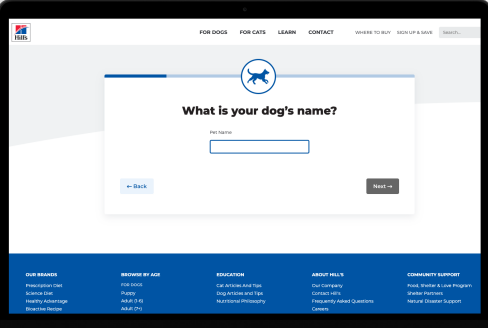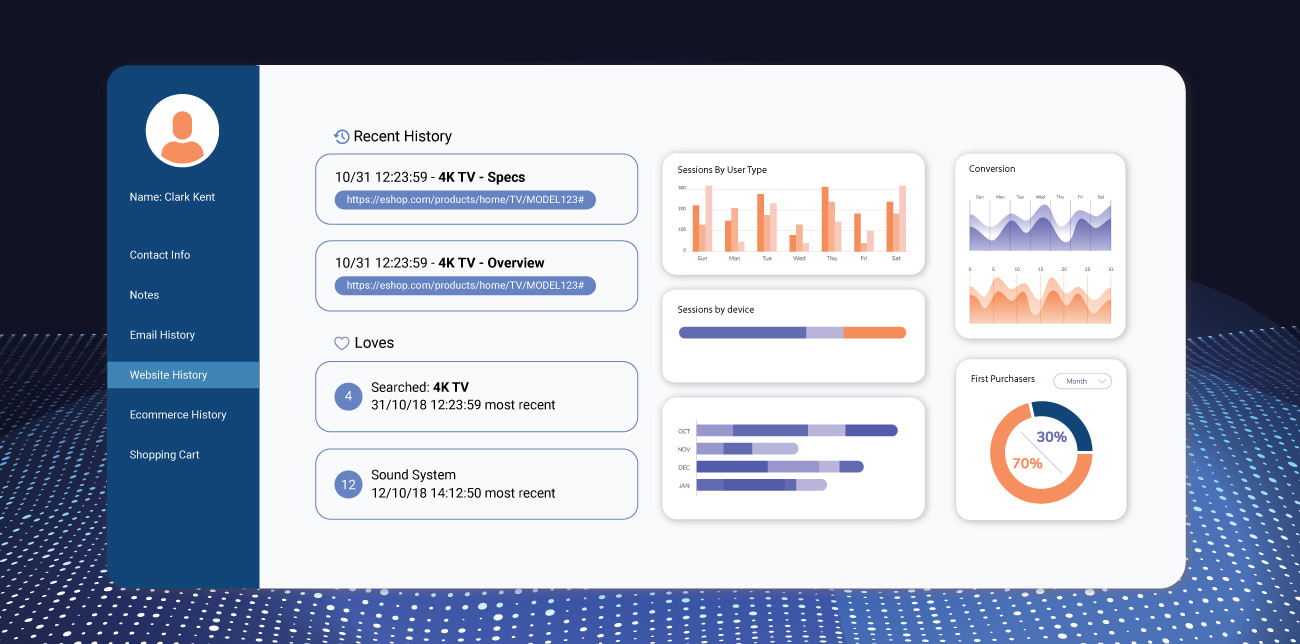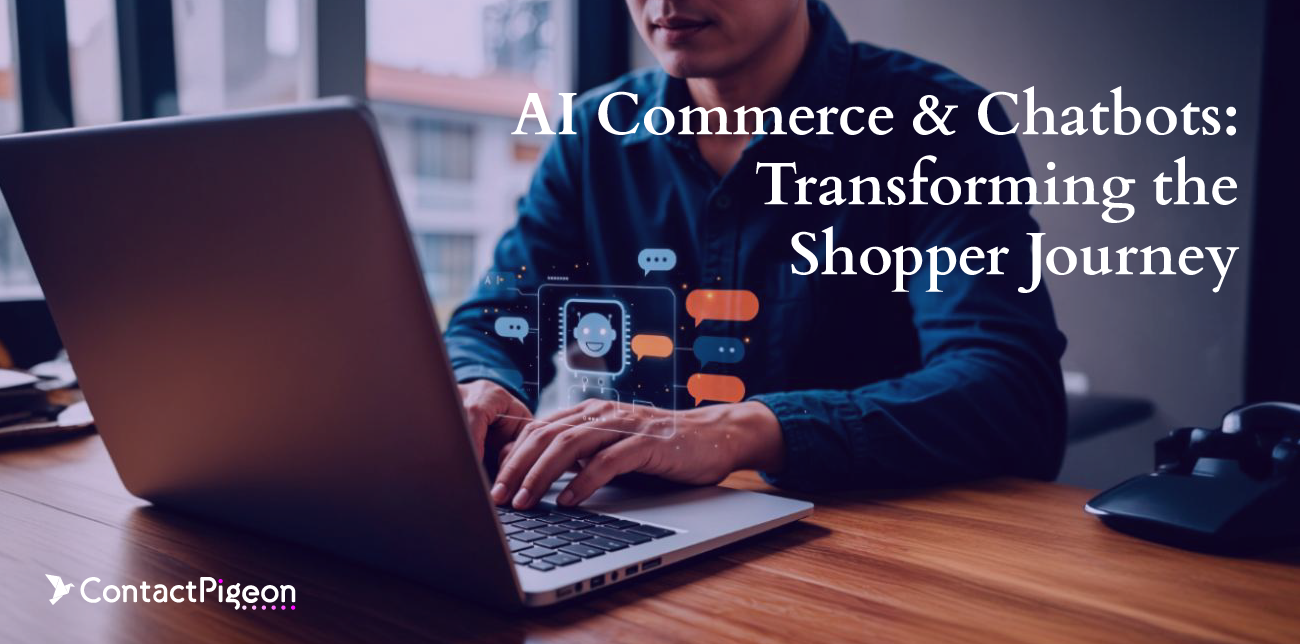Brand loyalty is hard to come by, even harder to maintain, but so easy to be destroyed. The ever-changing environment of marketing and eCommerce has had a long-lasting battle with accumulating data in lawful and non-intrusive ways, given the scandals that have emerged from misconduct. Couple that with multiple regulations on a global scale, and it’s evident that marketers need to steer their ships to less volatile and turbulent waters. To achieve a tailor-made shopping journey and keep your customers close to you instead of turning them away, retailers need to respect their information and cater to their needs. Zero and first-party data is the answer to every prayer; in these circumstances, it may be the only viable solution.
In this blog post, we will take you through the different sets of party data and analyze best practices for the effective implementation of zero and first-party data. Let’s get started and see how you can leverage the power of data aggregation.
Table of Contents
- > What is zero and first-party data?
- > Why is zero and first-party data crucial for marketing personalization in eCommerce?
- > Zero and first-party data collection: best practices
- > Steps to use zero and first-party data for marketing personalization in eCommerce
- > Real-world examples of marketing personalization using zero and first-party data in eCommerce
- > Moving forward with zero and first-party data
What is zero and first-party data?
Understanding the basic terms and types of data can empower retailers and eCommerce professionals and provide deeper customer and industry insights. Below you will get a clearer picture and deliver personalized interactions for long-term growth.
Definition of zero and first-party data

Zero-party are not as renowned as they should be, but their benefits are tremendous. It includes psychographic information about a brand’s users and visitors and is even more direct than any other type of data. All a brand has to do is ask, and its customers only have to answer. They get collected through surveys, questionnaires, quizzes, emails, on-site pop-ups, and apps, with their core philosophy extending the notion of simple targeted and personalized ads. They aim to enforce consumer-brand trust and respect and make engagements more strategic and thoughtful. On-site or physical customers will need a strong motivation to share their data, and a very enticing reward, so brands must be ready to deliver.
First-party data refer to the information that an organization or a business can accumulate, monitor, and store through their channels and sources. They track customer behavior through digital actions along the customer journey, but first-party data are not as direct as zero-party data. First-party can predict future behavior, but zero-party knows precisely how the user will act in the long run. It is collected with explicit consent from the customers involved, and along with zero-party data, they are considered the most credible types and appropriate for use.
The channels and touchpoints included are online and offline, like in-store QR codes, websites, apps, CRM, surveys, and social media. This means that your business is the first collector of information, directly given by your audience’s will and consent, with no mediators. They include different sets of behavioral data regarding demographics, preferences, browsing history, past purchases, clicks, or pageviews, to name a few. Of course, data accumulation should align with privacy laws and regulations for their protection and security, and the conditions of use should be clear.
First-party data vs. zero-party data
The difference between first and zero-party data is that the first is about past behavior, whereas the second is about future behavior. With first-party data, retailers and eCommerce companies can foresee actions based on AI and algorithms, where there is always a chance of error. Zero-party data comes directly from the source itself, i.e. the customer, describing exactly how the user will do, want or buy in the future, leaving nothing to chance. Zero-party data are self-reported and shared intentionally.
First-party data vs. second-party data
Second-party and first-party data in marketing differ in terms of ownership and source. Essentially, they can be as another company’s first-party data; one trusted partner shares its data with another, but it doesn’t sell them. This relationship is a mutually beneficial situation for marketers and companies, and they are preferable to third-party, but consumers don’t get much value out of the equation.
First-party data vs. third-party data
Outside vendors and organizations gather, control, and own third-party data to sell them to other businesses. Therefore, the main differences between third and first-party data lie in terms of source and ownership, but most importantly, accuracy and credibility. First-party data come directly from the customer, whereas the quality of third-party data depends on the practices of the provider. Due to their generic nature, third-party data are not suitable for personalized interactions and relationship marketing, and their use is recommended for broader market research and insights.
The rising importance of zero and first-party data in eCommerce

Zero and first-party data are vital for eCommerce, as they enable retailers to maintain ownership and control of the gathered information and use it for their marketing efforts properly. Data from zero or first-party sources deliver deep and personalized interactions with targeted promoting material based on facts, not guesswork.
Personalization is the key to eCommerce, and anticipating the needs of your customers can only be achieved through credible information. Gathered from different touchpoints along the entire customer journey, the relevance of zero and first-party data increases customer experience, retention, and loyalty. Moreover, adhering to privacy regulations about personal information builds trust between the brand and the consumer, adding credibility to the business and improving word-of-mouth marketing.
Why is zero and first-party data crucial for marketing personalization in eCommerce?
Interestingly enough, despite their evident advantages, most eCommerce and retail brands do not leverage their true potential. There are many compelling reasons to trust zero and first-party data for your marketing personalization strategies, as they share the same values: that the customer comes first, and brands have to meet their needs in every step of their shopping journey. Below you will learn more about the benefits of zero and first-party data in eCommerce.
Building trust and improving customer relationships
The most valuable asset of zero and first-party data is that they drive more meaningful engagements with personalized and tailored content. They can double a company’s revenue, in comparison with an irrelevant ad, and create returning customers in the process. Customized offers and product recommendations improve the customer engagement of a brand and enhance long-lasting loyalty.
Perfectly timed messages and on-point communications better the customers’ perception of a business and strengthen relationships, as the audience needs messages that resonate with them. A satisfied customer is more inclined to make return purchases and recommend the brand to others, and all these can be possible with the correct use of zero and first-party data.
Enhancing customer segmentation with richer customer profiles
Dividing your customer base into distinct groupings will make your marketing campaigns more effective and efficient. To design segments that can generate more leads or nurture and convert existing ones, you should accumulate credible data based on enriched customer profiles. Zero and first-party data are the ideal way to learn more about your audience’s individual spending habits, needs, and preferences. Following this, you will be able to allocate your resources according to the segments you want to target or explore new opportunities.
Optimizing marketing ROI and customer engagement
The enhanced relevance and accuracy of zero-data and first-party data generate quality audience insights about past and future patterns. This acquired knowledge will help you to make better business decisions and choose your upcoming marketing campaigns wisely. Consequently, you will also be able to control your financials and invest in campaigns that will yield results.
The more you learn about your customers and their habits, the better your offerings will become. You will engage them with compelling communications, offers, loyalty programs, and promotions that will meet their expectations. Avoiding spammy messages will improve conversions and nurture your existing relationships, which will lead to boosted marketing ROI and overall success.
Creating a unified customer experience and boosting retention
A seamless customer experience is vital to establishing improved engagement patterns in your strategy. With aggregated zero and first-party data, you can track and monitor which channels have the best response and engagement rates. Nowadays, customer experience is ambient, meaning that customers don’t go to brands, but the brands have to go to the customers and entice them. With data-driven campaigns, you can optimize your marketing channels accordingly and minimize the use of ineffective channels, eliminating silos and focusing on a frictionless customer journey.

Zero and first-party data collection: best practices

Now that third-party cookies are out the door, the eCommerce marketing automation landscape is evolving and changing. If you are wondering how to start collecting zero and first-party data, take a look at the latest examples and best practices.
- The best way to start collecting data is through website analytics and mobile app analytics so that you can begin to track and monitor user behavior and interactions. This method will give you data about their intentions and preferences, the frequency of their purchases, their average order value, and many more.
- Integrate interactive content in your marketing strategy that your customers can answer directly and accumulate zero and first-party data through customer feedback, sweepstakes, fun quizzes, surveys, or loyalty programs. The list is long, so try different things and see what makes the most sense for your goals. Of course, you will have to give an exciting and enticing offer in return, but the benefit will be immense, and your audience will trust you easier.
- Explore different channels, both offline and online and make optimizations to your web forms, pop-ups, or landing pages. Additionally to these tactics, consider using QR codes in your brick-and-mortar stores, and send automated personalized content and recommendations for better engagement via personalized emails, texts, etc.
Steps to use zero and first-party data for marketing personalization in eCommerce
Behavioral data will give you a roadmap of information to use correctly to produce viable results for your business. Read below to find easy steps to kick off your data-driven marketing efforts.
- Maintain data hygiene and compliance: Zero and first-party data comply with global regulations and policies about the collection and use of data so that your customers do not feel violated. Keep in mind that 35% of consumers get annoyed when they get messages regarding information they didn’t choose to share with the brand.
- Create customer personas: Define your customer personas and set clear goals and KPIs. This tactic will keep you focused and target your audience with relevant offers instead of messages that don’t resonate with them.
- Segment your audience: Divide your customer lists based on your selected criteria and your brand’s positioning and products.
- Personalize your content and your offers: Give value to your consumers and reward them for choosing to share their data with you in the first place. Personalization proves that you can provide a better customer experience and is the foundation of relationship marketing.
- Implement omnichannel marketing: Reach your consumers in the channels that are more likely to respond to, according to their past behavior. Try online and in-store channels like QR codes, SMS/Viber messages, push notifications, emails, pop-ups, chat, social media, websites, and apps. Ensure that you have a holistic view of your customers’ actions, both in the digital and the physical realm.
- Track and analyze results: Create a marketing calendar according to your needs and what works best for you, and set clear deadlines. Track your campaigns regularly to keep an eye on the performance of your marketing efforts according to your desired timeline.
- Utilize a CDP: Utilizing zero-party and first-party data, alongside a powerful customer data platform (CDP), offers retailers a significant competitive edge. Zero-party data, explicitly shared by customers, provides invaluable insights into preferences and motivations. This, combined with first-party data (behavioral observations), allows retailers to tailor hyper-personalized experiences, boosting customer satisfaction and loyalty. CDPs centralize this data, facilitating targeted marketing campaigns across channels, leading to increased conversion rates and ROI. The CDP institute indicates that around three-fourths (73%) of companies value CDPs as a critical aspect of their customer experience efforts.
- Test and optimize: If you don’t experiment, you will miss out on potential opportunities, so don’t hesitate to combine different things and test new channels. Make the necessary adjustments and optimize your strategy along the way.
Real-world examples of marketing personalization using zero and first-party data in eCommerce
To fully understand how to use zero and first-party data, let’s examine some intriguing examples by industry giants. The next thing on your list should be to take a page out of their playbook and see your business soar.
Sephora
Sephora’s data-driven strategy has reached the spotlight numerous times, as it is one of the few brands that have implemented a fully omnichannel approach for a personalized customer experience. Their mobile app offers an exceptional customer experience with product reviews, relevant recommendations, and the Virtual Artist feature. The Visual Artist is an AI feature that uses facial recognition software to scan the user’s face and suggest products based on the individual’s skin tone.
Nike
Nike’s website allows loyal members to design their own pair of shoes and make all the changes they want to the fabric, the textures, the colors, and many more. Giving customers the freedom to create their own shoes based on their tastes and needs boosts brand loyalty but also feeds Nike with zero-party data about what they like explicitly. What’s more, consumers gave that information willingly.
PAG
The archery equipment PAG achieved to collect over 100,000 entries through paid ads, social media, TV ads, and email marketing and gathered significant information about their target audience. 60% of the entrants turned out to own products of a competing brand. With a 50% open rate on personalized emails, this campaign allowed PAG to alter its strategy to better align with the company’s customer personas.
Hill’s Pet Nutrition

Hill’s modified its homepage into an interactive canvas featuring a detailed questionnaire to ask about their pet’s name, birthday, food preferences, allergies, and if they are using competitive brands. This quiz leads pet owners to the right product according to the data they provided and made conversions a piece of cake.
Moving forward with zero and first-party data
Now that marketers and business professionals can access such an extensive pool of data, sending bulk, en masse campaigns is not an excuse for poor performance anymore. Data-based, actionable insights, consent, personalization, and hyper-personalization in retail drive growth and success. Brands need to accommodate their customers’ purchase cycle and their attributes, not the other way around. Zero and first-party are the key to creating meaningful engagements and a sustainable business model that will last. Relationship marketing is the future of eCommerce and retail.
Capitalize on the potential of zero and first-party data to refine your marketing strategy and position your brand at the top of the ladder. At ContactPigeon, we are committed to providing our unique expertise in this ever-evolving market, understanding the individual challenges and opportunities of each of our clients. Book a free 30-minute consultation with our team of experts and learn how our innovative solution can make your business scale.

Let’s Help You Scale Up
Spending time on Linkedin? Follow us and get notified of our thought-leadership content:





